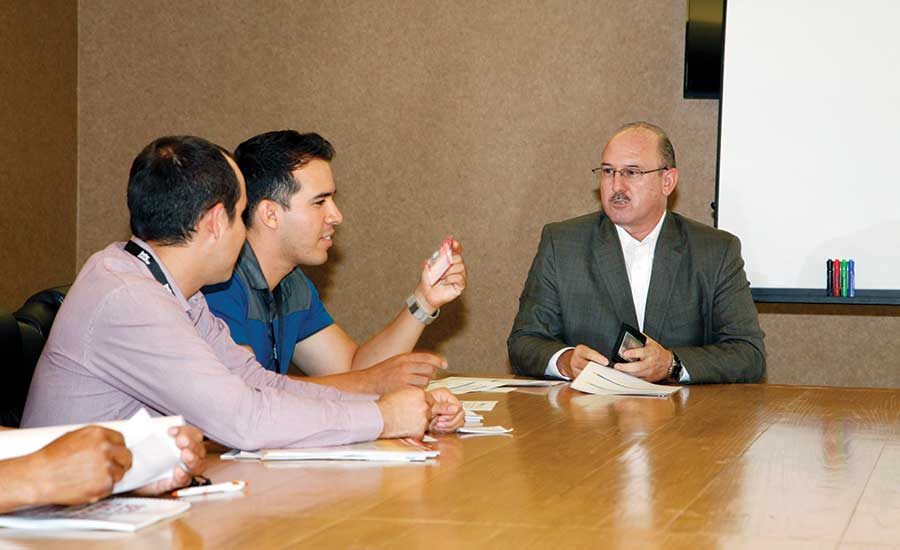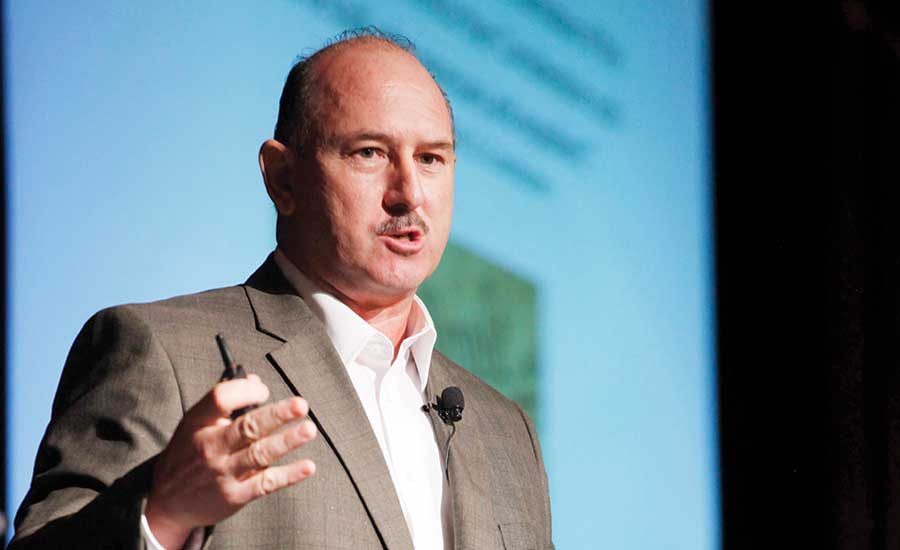The 6 Stages of Cultural Mastery
Ricardo González’s New Book Shares a Roadmap for Leaders in Today’s Culturally-Complex World






For years, Ricardo González has used his own unique approach to managing multiculturalism in the workplace to help bridge the gap between Latinos and non-Latinos and promote productive and successful relationships in the roofing industry and beyond. Along the way he developed six stages that provide the framework for becoming a cultural master — someone who has broken through the barriers that arise when managing and leading people from various ethnicities and cultures.
He’s compiled them in his new book The 6 Stages of Cultural Mastery, where he provides specific and achievable goals that can help leaders transform themselves, and in turn, more effectively lead employees to success. And he’s shared this closer look exclusively with RC readers. — Art Aisner
The Leader’s Greatest Challenge
The greatest challenge facing today’s leader is the challenge of leading diverse groups of people. Your organization has perhaps had trainings on “How to Avoid Cross-Cultural Faux Pas,” “Cultural Competency in Corporate America,” or even “How to Communicate with Your Millennial Workforce.” But these can fall short, as you may have noticed. Because becoming a cultural master takes more than learning a few things about the people you work with and getting a few strategies for how to reach them. It certainly implies more than being culturally competent. I don’t want to simply be competent and get by — I want to be a master and enjoy great levels of success in my cultural leadership. Without undergoing the deeper work, most of us will still likely find ourselves faltering in culturally complex relationships. At the very least, we won’t come close to approaching the levels of success that are actually possible.
I’ve seen far too many leaders try to succeed with people of diverse backgrounds, only to fail — alienating or offending them at the most critical moments. In today’s culturally sensitive environment, this type of failure can cost you your reputation, your career, and even your business.
Early leadership teachings propagated the idea that IQ (intelligence quotient) was a differentiator. Leaders needed to have at least an acceptable IQ to have the credibility to lead. Then in the 90s the concept of EQ (emotional quotient) began to garner serious attention in the leadership community.
Now, in today’s world, high CQ (cultural quotient) is an absolute necessity as businesses expand internationally and also hire large numbers of diverse talent.
The good news is that leaders can greatly improve their CQ. They can become cultural masters and succeed at the highest levels with their teams. The 6 Stages of Cultural Mastery will provide you with a clear roadmap for how to lead effectively in our culturally complex world. The Six Stages will prepare you internally to enjoy high levels of success with people of all backgrounds and cultures. They will also protect you from making those unintentional, but serious, mistakes with people of other cultures. I can promise you that the result for you and those you influence will be life-changing. In addition, once you are a true cultural master, you will be in a much better position to lead meaningful cultural transformation in your organization or community.
These Six Stages will take some work. They will take commitment on your part. They won’t come to you overnight. The benefit, however, of being a cultural master is that you will reach a realm of leadership that few leaders enjoy, or perhaps even understand. Cultural mastery will separate you from the pack and allow you to effectively lead varied and diverse teams to much higher levels of creativity, productivity, and yes, profitability.
What is Culture?
Culture, simply put, is the DNA of a group, organization, or society. It’s the product and the expression of a people’s shared experience. It both defines and drives the group. It defines the internal relationships of the group, and it drives the behavior of the group members both internally and externally. Yet it’s not static; it’s constantly changing. Here are the main elements of every culture:
beliefs, values, language, norms, and symbols.
We may not like some element of a culture, we may not agree with it, we may even think it’s wrong, but that judgment won’t change anything for the better. Culture is, and until we accept the realities of a given culture without making moral judgments on it or its people, we have no chance of working effectively within its constructs. If we do not fully accept the realities of a given culture, we will be frustrated as leaders, and we’ll also be frustrating to those we lead from within those cultures. Whenever we make judgments on another culture, we take ourselves out of position to actually have positive influence in and on that culture. We simply cannot lead people effectively if we are resisting them or their culture emotionally.
Culture is. We must understand this before we go any further. Culture is. (As Immanuel Kant, the 18th-century German philosopher, said, “What is, is.”) In other words, a culture, in itself, is neither right nor wrong. It simply is.
Three Actions to Help You Engage
How do we engage? Allow me to remind you that three of the 6 Stages of Cultural Mastery require proactive behavior on our part, and this is one of them. Yes, it takes real commitment to engage with other people. It takes energy. It takes time. Sometimes it takes downright courage. However, if we are leading people of other cultures, this is part of our responsibility — and the benefits of engagement are significant.
Following are three principles that will help you engage in a way that will be meaningful — both for you and for those with whom you engage:
Prepare
Before you go out trying to engage with people, prepare yourself. This also takes us back to State One: Education. I decided to get a PhD. in Mexican studies. I was going to master this no matter what. Now, this wasn’t a typical academic Ph.D. Program — this was a pool hall degree! I bought a pool table, put it in my living room and practiced and practiced so I could engage with Mexicans in their pool halls on the weekends without embarrassing myself. In my case, I prepared by buying a pool table so I could get good enough to be respected in the pool hall.
So if you want to engage with, say, a group of business-people from the Makah Indian Reservation in Washington, you might prepare by learning about Makah history and culture, about landmarks like Tatoosh Island, about fishing and whaling, about Ozette Village and the Makah Research and Cultural Center. You might learn a few words of the Makah language. And you should learn something about treaty and fishing rights. That’s just a start.
Practice
That’s right, practice. I practiced pool for countless hours. I didn’t want to embarrass myself or count myself out of the opportunity to play with someone I wanted to speak with or get to know. Practice is part of the training process. When we learn to ride a bicycle we are taught using training wheels. These wheels keep us from tipping over while we are learning to keep our balance. They are just above the actual line of the two main wheels so that as we gain our balance, the training wheels only serve as the lifelines until we fully master the skill.
If you’re learning a new language and you want to use it in real and meaningful situations, naturally you’ll want to practice it with a professional instructor beforehand. If you want to engage for the first time with a group of people in their social setting, you’ll want to practice first, perhaps by getting together with the one among them you are most comfortable with. For example, let’s say you are planning to engage by attending a meeting of your local Asian Pacific Chamber of Commerce. Perhaps consider finding someone within that community who will role-play some different possible scenarios with you. In addition to learning about the main players and mission of the association (Stage One: Education), role-playing some scenarios will give you practice in applying what you have learned.
If you have to, get in front of a mirror and practice what you are going to say. How do Asians typically great each other? What are protocols for entering or leaving a conversation? Remember, communication is both verbal and nonverbal, and it helps to know when to keep quiet — listening is a skill that takes practice as well. Another way to practice might be to visit a similar group away from your home area where you can practice without so much at stake. This would be akin to a professional sports teams playing an exhibition game. The point is that engagement can be practiced, so when you get to the real deal, you’re ready. And remember, even when you do get to the real deal, at least at the beginning you’ll be a rookie, so be patient with yourself and keep practicing! You’ll be in the major leagues soon.
Participate
Once you prepare and practice, it’s time to participate. At this point, you should have the skill and confidence to engage in a self-assured and meaningful way.
One thing I have found is that people who are different (that is, from other cultures), are almost always very impressed when we take the time to participate in their activities in an educated and meaningful way. The problem is that most people don’t prepare and practice beforehand, and then they don’t (or can’t) understand why people are not responding to them the way they had hoped. So before you participate, prepare and practice! And then be open to what happens — try to loosen up on your expectations. Granted, this takes a bit of humility on the front end but it’s more than worth it, since people will clearly see that your heart and soul is with them.
Looking for a reprint of this article?
From high-res PDFs to custom plaques, order your copy today!










